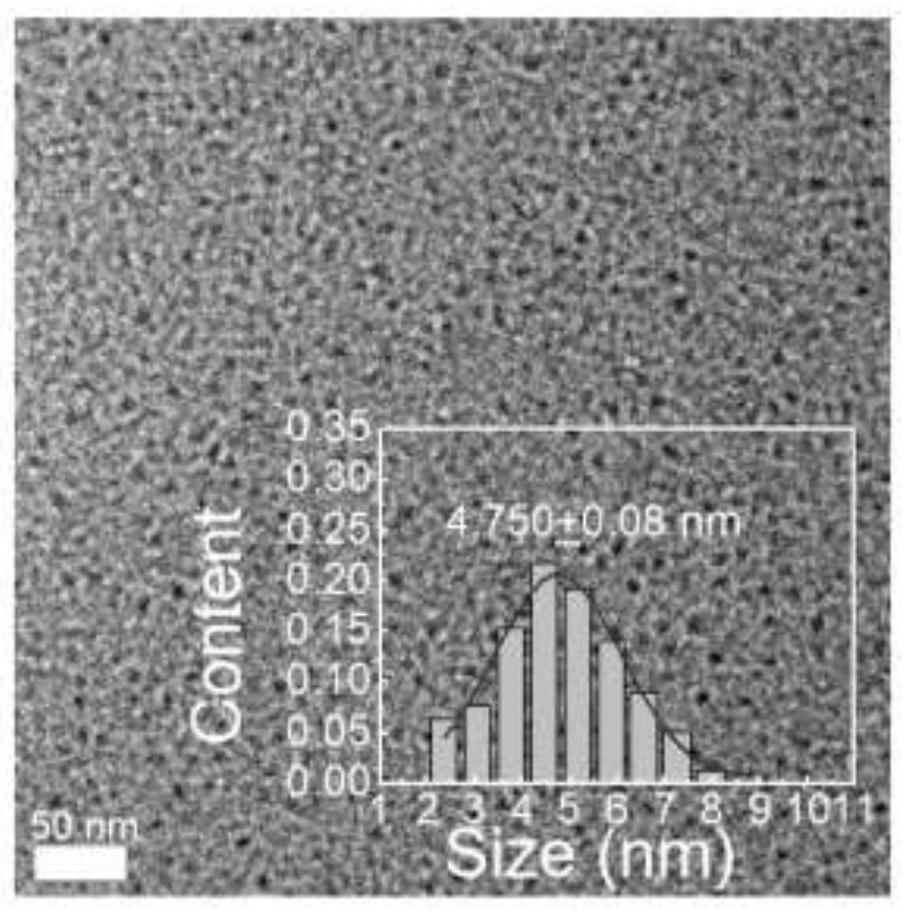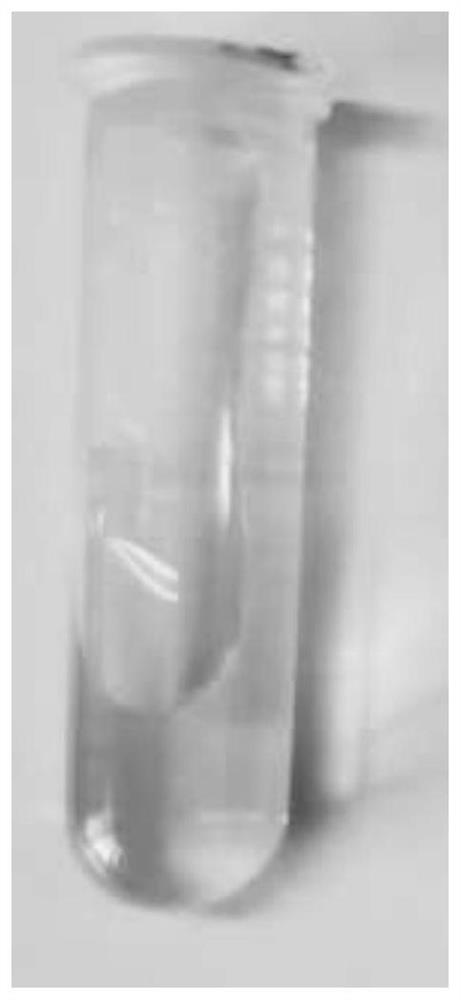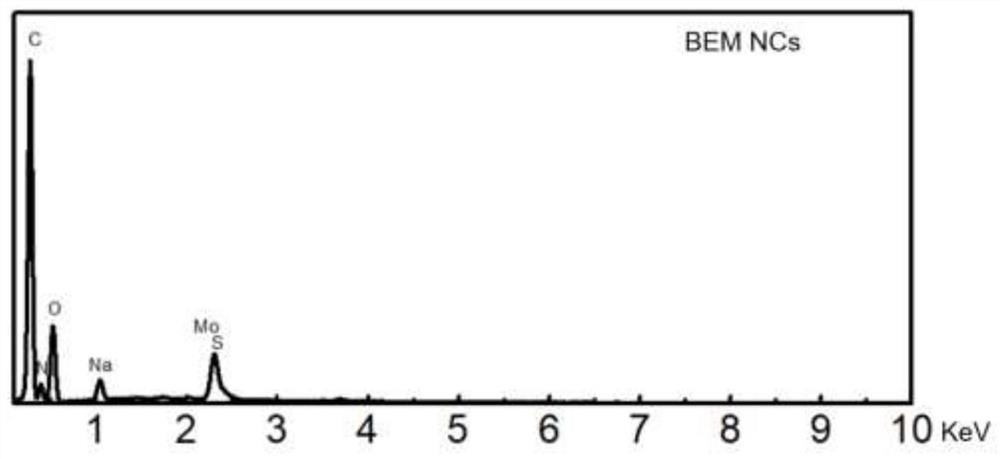A bovine serum albumin-tea polyphenol-molybdenum nanocomposite and its application
A bovine serum albumin and nanocomposite technology, which is applied in the field of nanomedicine, can solve the problems of complex design and preparation process of nanomaterials, clinical transformation and application increase, etc., and achieves easy large-scale synthesis, simple method, and biocompatibility. Good results
- Summary
- Abstract
- Description
- Claims
- Application Information
AI Technical Summary
Problems solved by technology
Method used
Image
Examples
Embodiment 1
[0043] (1) Weigh 0.001g bovine serum albumin and dissolve it in 0.4mL ultrapure water, and mix it evenly by ultrasonic and magnetic stirring;
[0044] (2) Add 0.01mL epigallocatechin gallate aqueous solution (10mg mL -1 ), continue to stir, so that the mixture is fully mixed;
[0045] (3) Add 0.03mL MoCl dropwise 5 Aqueous solution (15mg mL -1 ), continue to stir, so that the mixture is fully mixed;
[0046] (4) Add 0.014 mL of NaOH aqueous solution (1mol L -1 ), continue to stir, and react at room temperature for 30min;
[0047] (5) The reactants were dialyzed, and BEMNCs were obtained after dialyzing with a dialysis bag (molecular weight cut-off: 100kD) for 24 hours. Change the water 4-6 times during dialysis.
[0048] (6) After the dialysis is completed, the obtained product is dried and collected with a vacuum freeze dryer.
[0049] figure 1 It is a transmission electron microscope image of BEM NCs in Example 1 of the present invention. It can be seen from the figu...
Embodiment 2
[0054] In order to prove that the BEM NCs obtained in Example 1 of the present invention have a good effect on inducing the immunogenic cell death of mouse cancer cells (4T1), we measured the release of damage-related molecular patterns of 4T1 cells after incubation with BEM NCs, specifically The test method is as follows:
[0055] (1) Analysis of the transfer of calreticulin to the membrane surface of cancer cells
[0056] 1 mL of 4T1 cells (5×10 5 cells) were inoculated into 1 ml culture dish for 24 h. Then, 1 mL of BEM NCs medium solution was added to the cell culture dish and cultured for another 24 h. Afterwards, the cells were washed 3 times with PBS. 4T1 cells were further incubated with anti-calreticulin antibody at 4°C for 12 hours according to the method described in the calreticulin probe manual. Then, cells were further incubated with Cy5-conjugated secondary antibody for 2 hours. Then, nuclei were treated with DAPI (10 μg mL -1 )dyeing. Finally, the express...
Embodiment 3
[0065] To demonstrate whether the immunogenic cell death process described above could stimulate immature DCs to engulf fractions of stressed and dying tumor cells and become mature DCs, a dendritic cell maturation study was performed. The specific test method is as follows:
[0066] (1) BALB / c mice aged 6-8 weeks were selected, and immature dendritic cells were isolated from bone marrow. Specifically, bone marrow was obtained by flushing femurs and tibias with PBS.
[0067] (2) After the erythrocytes were lysed, the cells were inoculated in a 100mm×20mm cell culture dish, and the cells were cultured with DC cell culture medium, and the medium was changed every two days.
[0068] (3) On day 7, non-adherent as well as loosely adherent cells were collected for further use.
[0069] (4) The residual 4T1 cancer cells incubated with BEM NCs medium solution for 24 hours were placed in the upper compartment of the transwell system, while the dendritic cells were seeded in the lower...
PUM
 Login to View More
Login to View More Abstract
Description
Claims
Application Information
 Login to View More
Login to View More - R&D
- Intellectual Property
- Life Sciences
- Materials
- Tech Scout
- Unparalleled Data Quality
- Higher Quality Content
- 60% Fewer Hallucinations
Browse by: Latest US Patents, China's latest patents, Technical Efficacy Thesaurus, Application Domain, Technology Topic, Popular Technical Reports.
© 2025 PatSnap. All rights reserved.Legal|Privacy policy|Modern Slavery Act Transparency Statement|Sitemap|About US| Contact US: help@patsnap.com



